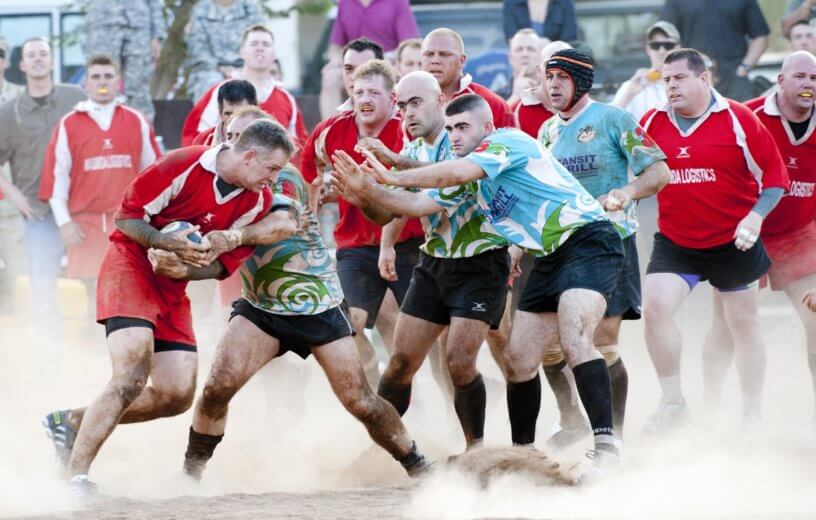INDIANAPOLIS — The subject of head trauma in sports is a potent issue. We know more about the dangers of head trauma than ever before, which has lead to lingering questions about the safety of high impact sports like American football and rugby. Now, a new study released by the American Academy of Neurology finds that rugby-style tackling may have a much lower force of impact than tackles performed by football players.
“For athletes who participate in a sport that involves a tackle or direct contact, adapting a rugby-style tackle where the players lead with their shoulders, not their heads, could make college sports safer,” explains author Zach Garrett in a release. “A small number of NFL teams have incorporated the rugby-style tackle in an effort to reduce risk of concussion.”
The study recorded impact data from 30 male college athletes during their spring practice sessions. Of the participating athletes, 20 were football players wearing impact sensors in their helmets. The other ten participants were rugby players with sensors in their mouth guards.
By the end of spring practice season, the football participants tallied 3,921 impacts during 12 practices. The rugby players totaled 1,868 impacts over the course of nine practices. Researchers adjusted for factors like false impacts, different sample sizes, and practice style, and found that the frequency of impacts was lower for rugby players than for football players. Researchers also noted that less head impact was recorded in rugby compared to football.
Besides lower frequency rates in general, rugby tackles were also found to be less impactful. Impact was measured in g-force, a measurement of gravity in units of acceleration. The rugby players had an average impact of 21 g-force, while football players had an average impact of 63 g-force.
“Further studies with larger numbers of participants are needed to confirm these results and also to determine whether using a rugby-style tackle could effectively reduce the force of impact and potentially reduce the number or severity of concussions in college football,” Garrett says.
The research will be presented at the American Academy of Neurology Sports Concussion Conference in July, 2019.
